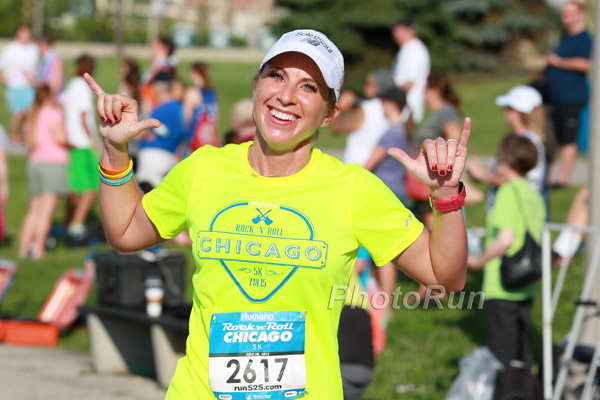Yoga With My Fellow Runners From Kenya
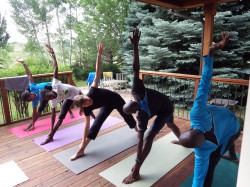
Ever since I can remember, I have been mesmerized by the effortless running technique and the relaxed running stride of our fellow runners from Kenya. I am still wide-eyed when I see how smooth they look during and even at the end of a marathon. I have such admiration for their craft. And every time I went back to Kenya—my first trip was in 1991—I tried to find an explanation not just for their joy of running but also for their elegant running style. I observed them while we were in our training camp in Karen, just outside of Nairobi, and later in Nyahururu, and finally in the training base in Iten. I could see that even under the pressure of the highest speed during their training runs, they would appear under control—to be running within themselves—while being fully focused yet very relaxed.
Over the years, I learned their great results came not just from their strong desire to incorporate key-values in running-related training, good nutrition, and self-motivation, but also from a feeling of necessity to succeed. Interestingly, I discovered some of my Kenyan running friends also were exploring the benefits of stretching and yes, even yoga.
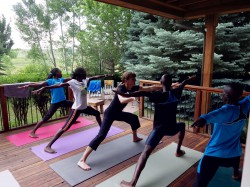
Some years ago, a group of our Kenyan friends who trained with me in Boulder asked me, “Uta you enjoy running so much and you look so relaxed. Can you teach us some of your yoga stretches?” I felt humbled to be able to help these great athletes and I have worked with them ever since, extending my own yoga program for them every year. Now, teaching yoga stretching and stabilization to my fellow runners from Kenya has become one of my favorite things to do in coaching.
We meet once or twice a week for our yoga session. The team runs together from their apartment to my house in Boulder—an easy afternoon jog for them. They are greeted with some thirst-quenching watermelon on the patio while the yoga mats are made ready. On bad weather days, we go to the basement workout room. Then, outside or inside, together we enjoy a nice 45- to 60-minutes yoga stretching and strengthening session.
Before we begin, we briefly discuss each athlete’s current ailments and muscle tightness. This evaluation usually gives me a good indication of what I have to focus on during the session. As runners know, we often experience tightness in the lower back, hamstrings, quads, calves, and Achilles areas. After we finish our assessment and I have gone into the fundamental explanation of inhalation and exhalation for all the yoga poses, we start our program by settling into Mountain pose [Tadasana, this is the first exercise described in the article]. It is a good idea in the beginning to focus on easy exercises just to loosen up, and the Mountain pose is one of our favorites. Using it, we can stretch out the entire body, lengthen the spine, open the chest, and relax the shoulders.
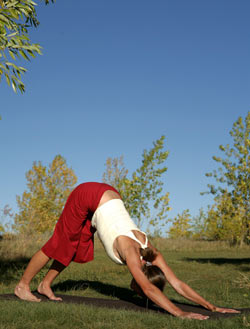
The beauty of our yoga program is we enjoy exercising slowly. It is like a spiritual get-together. Of course, it is a stretching and strengthening program but at the same time we understand it will help us to recover from the previous workouts—like the one the runners did in the morning as well as their second workout they finished just before our yoga session. And we combine the elements of stretching and recovery to allow the rejuvenation of the mind, body, and soul to prepare for their upcoming workouts.
The program is divided into standing poses first and floor poses second. Depending on the needs of the day, we follow the Mountain pose with some standing poses such as the Downward-Facing Dog pose [Adho Mukha Svanasana], Warrior Two pose [Virabhadrasana II], Triangle pose [Trikonasan], and Side Angle pose [Parsvokanasana]. Then we exercise the Guy’s Stretch—Hip Flexor Stretch [this is the next to last exercise seen in the article], the Runners’ Yoga Stretch [this is the last exercise seen in the article], and more. All poses are done slowly, moving gradually into and out of a pose. Besides other benefits, we focus on opening up medially rotated shoulders, stretching the lower back, lengthening the tendons of the hamstrings and quads, and stretching the calves and the Achilles tendons.
Then we take a little break and go into the Child’s pose and stay in this pose for a while before switching to floor poses.
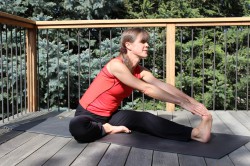
With these poses, we target the same or similar muscle groups and tendons as we did with the standing poses. Still, all the exercises are done slowly to make sure that, while exercising, the body’s structure is properly aligned. This follows the “Blueprint of Alignment” different yoga styles teach. The Kenyan runners like to do the floor poses after the standing poses because there is a sense of deeper relaxation while sitting and a sense of getting closer to the end of their routine. One of their favorite exercises is the Head Beyond the Knee pose [Janu Sirsasana]. Three other favorites are the Bridge pose [Setu Bandhasana], the Pigeon pose [Kapotasana], and a final favorite—the Spinal Twist [Ardha Matsyendrasan, this is the last exercise seen in the article]. Many of you know the latter exercise: It is tension-releasing, and increases flexibility in the neck, shoulders, and spine. It also gives a nice stretch to the glutes. Oh, it is such a beautiful exercise liked by many of us.
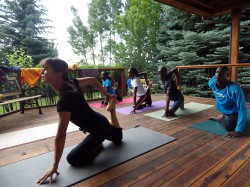
In each session, we focus on different exercises depending on the athletes’ needs. This also governs how often we repeat each pose and whether we repeat one of the earlier asanas later in the session.
The yoga routine ends with light mediation while being in the Corpse pose [Savasana]. This part is always different since I take them with a little story to places where they can relax and recover, and at the same time be happy about another day of training.
Namaste,

Video and Reading Suggestions:
- TED speech by David Epstein: “Are athletes really getting faster, better, stronger?”
- Uta’s own journey to her current yoga routine: “Yoga for the Right Balance.”
- Introduction to Uta’s “Yoga for Performance” program for beginners and athletes: “Yoga for Performancesm: Introduction.”
- “Yoga for Performancesm: Runners’ Sequence, Part 1”
- “Yoga for Performancesm: Runners’ Sequence, Part 2”
- “Would You Like To Run Better? Relax!”
- Posted May 12, 2014
© Copyright 2014-2025 Uta Pippig and Take The Magic Step®. All Rights Reserved.
More Insights
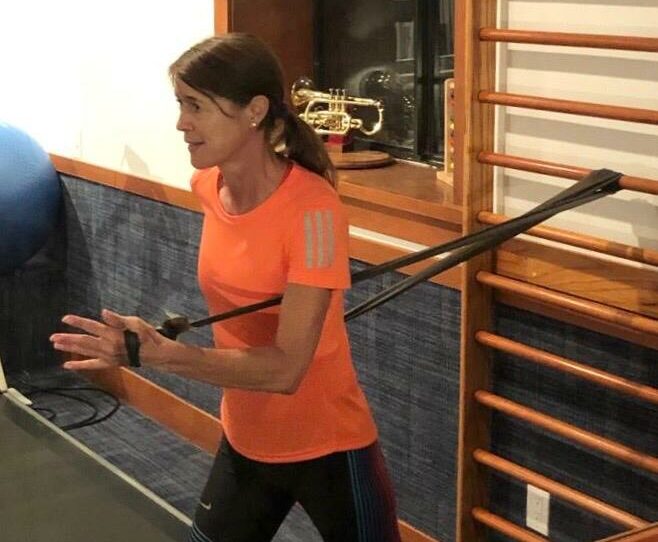
Uta’s Favorite Exercises to Improve Your Fitness and Running Technique
Uta Pippig has designed an at-home fitness program which only uses your own body weight, steps, and a Theraband. They are eight exercises that Uta often does herself.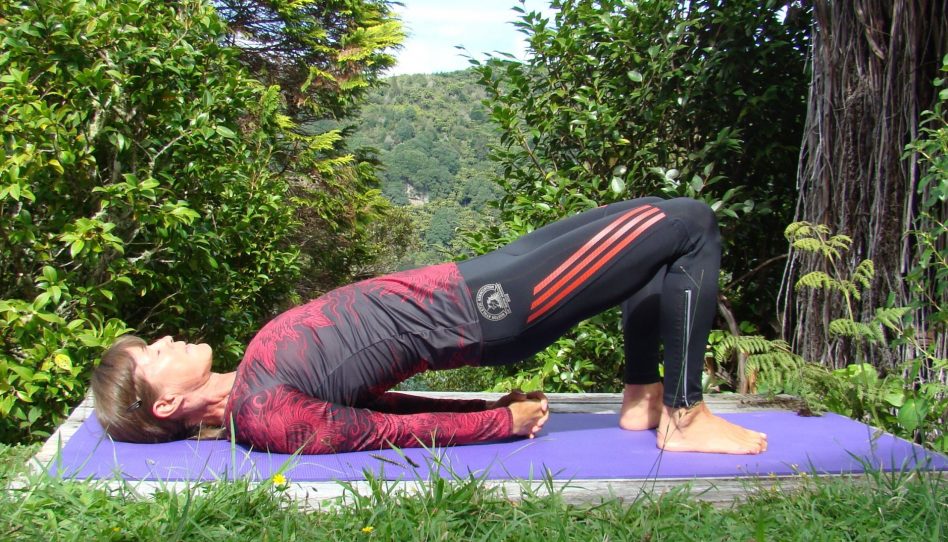
Uta’s Yoga and Stabilization Guide for a Better Running Technique
Runners, especially, can benefit from a well-balanced yoga and stabilization program. Uta suggests effective combinations of poses and exercises that have helped her gain the flexibility and balance that can lead to a better running technique for everyone.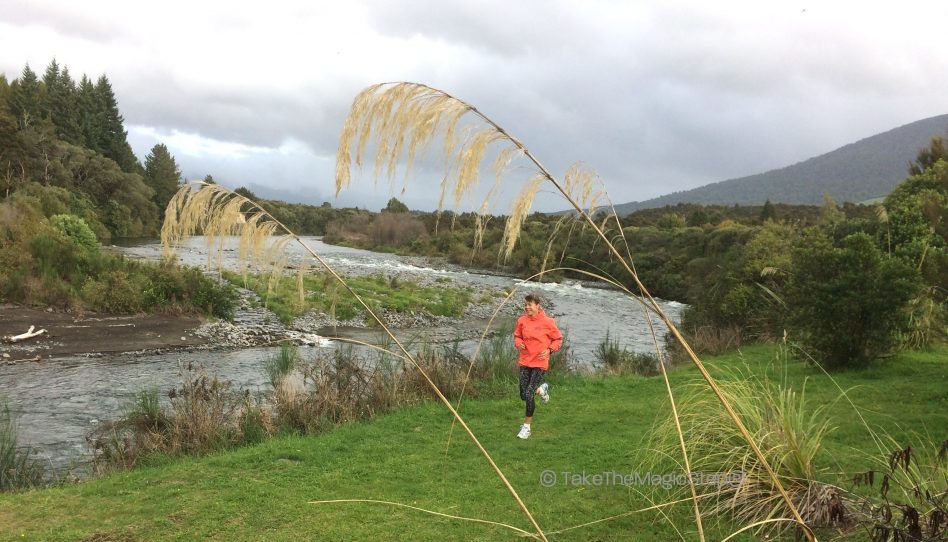
How a Clever Mental Focus Can Get You Through Running Injuries
Running injuries can be devastating, but learning to focus mentally can speed up the healing process. Uta explains how the forced break from running can actually provide future benefits.